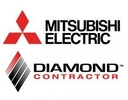Although Boerne, TX is known for its heat, there are still plenty of chilly nights left here this winter. As we near the end of the season, this is a good time to consider if your heating system is right for your needs. When it comes to choosing a heater, you want to keep in mind a few factors: upfront cost, efficiency, and the space available in your home. Below, we look at both centralized heating and ductless heating, reviewing the pros and cons of each system.
Centralized Heating
A furnace produces heat through either the combustion of natural gas in its burner, or electricity. This heat then passes through a heat exchanger and air from your home’s return ducts is blown over the heat exchanger. This warm air is then distributed through the ductwork in your home, warming the whole house.
Ductless Heating
Ductless heat pumps (mini-split systems) require no ductwork and are an extremely energy efficient way to heat your home. The primary benefit of ductless systems is that you don’t risk air loss from the ducts. In fact, according to Energy.gov duct losses could account for over 30% of energy consumption, particularly if the ducts are located in an unused space such as the attic.
Efficiency
While modern gas furnaces do have significantly higher efficiency ratings, ductless heat pumps could be up to 50% more efficient than a furnace overall. Ductless systems also do not cycle on and off as much as a furnace, reducing the wear and tear on the system.
Safety
This will not apply with an electric furnace, but gas furnaces present certain hazards. Though extremely rare, they run the risk of leaking carbon monoxide, which is odorless and poisonous.
To learn more about what type of heating system is best for you and your home, please contact D’Spain Sales & Service, Inc. today!





















